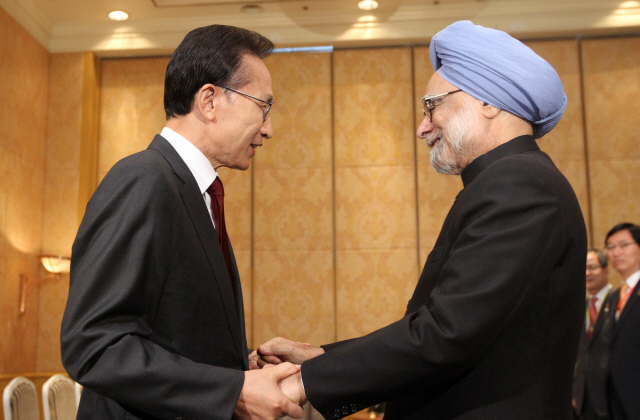The Peninsula
Important Issues in Asia’s Future Connect South Korea and India

By Nicholas Hamisevicz
Much of the focus this week has been on the enduring U.S.-ROK relationship and how these countries envision a future Asia as South Korean President Lee Myung-bak arrives in Washington for a state visit. However, beyond the U.S.-South Korea alliance, Korea’s emerging relationship with India can also be an important aspect in the development of Asia in the 21st century.
Despite the distance, pressing security issues for both countries with antagonistic neighbors, and their limited prior interaction, the issues that initially connected South Korea and India and led to a rapid growth in ties are also important aspects in the future progression of Asia.
Economics and trade have often been drivers of relations in Asia, and Asian countries will continue to look for policies and partnerships that will enhance their economic growth. Building off of their economic reforms in the 1990s, India developed its “Look East” policy partly to augment the reforms it was undertaking at home with economic relations with East Asian countries. Although initially focused on Southeast Asia, India’s Prime Minister P.V. Narasimha Rao did visit South Korea in 1993. More recently, South Korea and India signed a Comprehensive Economic Partnership Agreement in 2009, and after coming into effect last year, trade between the two countries has surpassed $17 billion. Additionally, the Indian government finally approved POSCO’s $12 billion steel investment plan this year, making it the largest foreign direct investment project in India.
The quest for energy to drive economic growth is also interrelated in Asia. South Korea imports most of its energy needs from the Middle East, meaning those shipments must pass through the Indian Ocean on their way to Korea. However, as South Korea has sought to offset its energy demands by using nuclear power, it has also begun to increase its nuclear power export capabilities. In the aftermath of the U.S.-India nuclear agreement paving the way for India to import nuclear technology and the recent Agreement for Cooperation in the Peaceful Uses of Nuclear Energybetween Korea and India, both sides are expected to increase their cooperation on nuclear energy.
Ironically, it is nuclear issues that originally brought India and South Korea closer on security relations as well. In combination with North Korean assistance to Pakistan on its missile technology, Pakistan also provided nuclear weapons technology and information to North Korea in the 1990s through A.Q. Khan, one of the important fathers of Pakistan’s nuclear program. In addition to proliferation concerns that still worry both countries, security cooperation for both India and South Korea extends to energy security and open sea lines of communication (SLOC). Important trade and energy needs traverse through the Indian Ocean; thus, India and Korea have begun cooperating on maritime security and emphasized “the need for greater cooperation” in these areas in the joint statement from President Lee Myung-bak’s state visit to India last year. South Korea also hopes India’s desire to enhance its military capabilities will have India looking toward Korea’s world class shipbuilding industry for additions to its navy as well as purchasing some of Korea’s new fighter trainers.
China’s rise has also become an underlying factor in South Korea-India relations. China continues to support both nations’ troublesome neighbors, North Korea and Pakistan, and furthermore, this support is often to the detriment of the goals of South Korea and India. For Korea, relations with India might help it deflect some of the pressures that come from its interaction with China as well as any perception of U.S. decline.
While both India and China are seen as rising powers in Asia, they are also competitors for influence in the region. For many in India this competition is viewed through China’s “string of pearls,” the evolving influence of China with India’s neighbors that could affect the SLOC around the Indian Ocean. Many in China share a reciprocal concern that India’s “Look East” policy is just another way to hem China in and prevent its natural rise. In the long-run, maintaining productive relations with both nations will likely be an imperative for Korea’s continued economic growth.
The growth of relations between South Korea and India has centered on converging ideas and requirements for the future prosperity of Asia. Economics, energy, security, and the role of China will all be major factors for the future development of the region, but also important connections for two democracies on opposite ends of Asia trying to enhance their regional and global profiles. The upgrading of their relationship to a “strategic partnership” signifies the value South Korea and India place on their relationship and the importance of them working together on vital issues in Asia’s future.
Nicholas Hamisevicz is the Director of Research and Academic Affairs for the Korea Economic Institute. His views are his own.
